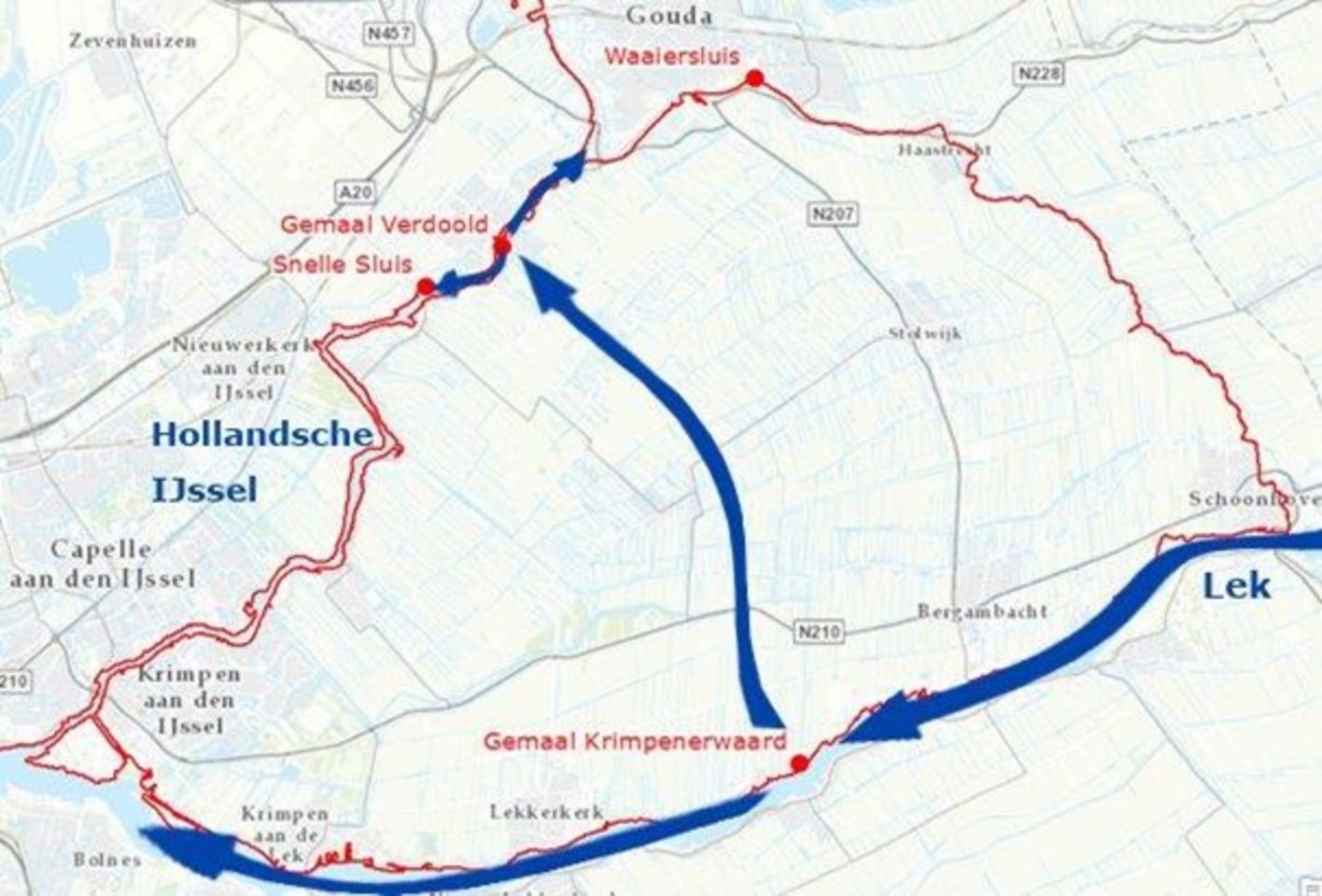Robust freshwater supply route in De Krimpenerwaard: bigger buffer in times of drought
Together with two water authorities – Schieland en de Krimpenerwaard and Rijnland – Witteveen+Bos is working on a freshwater supply route in De Krimpenerwaard. The route will transport water from the Lek to the Hollandsche IJssel, allowing reinforcement of a strategic freshwater buffer in the latter river’s upper reaches during periods of low discharge. It also means fresh water can continue to be collected from the Hollandsche IJssel.
Last summer, large parts of Europe faced major rainfall shortages that resulted in very low river discharges. Due to climate change, this will be an increasingly common occurrence. A prolonged dry spell could lead to problems in the western Netherlands – including the areas administered by the Schieland en de Krimpenerwaard and Rijnland water authorities – with the threat of a freshwater shortage. In dry periods, salt water from the sea moves further up rivers; this excessively salty water, however, cannot be used as it causes damage to agriculture, horticulture and nature.
Reliable model
Using so-called SOBEK model calculations, our project team is preparing variants for removing bottlenecks in the proposed route – such as small sluice gates and narrow bridges – and, where necessary, for widening watercourses. To produce a reliable model, the width and depth of the relevant watercourses need to be measured. It then becomes possible to calibrate the model using measurement data from the existing water system, which already functioned, in part, last summer as a supply route.
Opportunities for water quality
The variants are weighed up using factors such as effectiveness, impact on the surrounding area, and construction and maintenance costs. But the movement of water can also lead to opportunities: water quality in De Krimpenerwaard, for example, could be improved by a reduction in blue-green algae.
Multidisciplinary project team
To make this project possible, we assembled a multidisciplinary project team that includes hydrologists, ecologists and civil engineers. The aforementioned water authorities are maintaining close contact with the local community to identify interests, opportunities and ideas; they are being supported in this by specialists from Witteveen+Bos. Once a preferred variant has been chosen (mid-2024), it will be further developed.
Share this page
Contact

